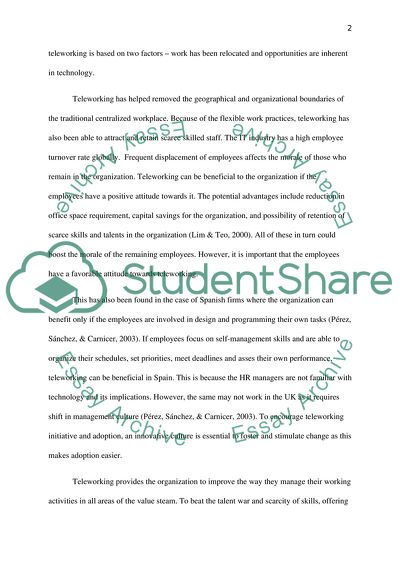Cite this document
(Pros and Cons of Telework From the Employers Perspective Coursework Example | Topics and Well Written Essays - 2000 words - 1, n.d.)
Pros and Cons of Telework From the Employers Perspective Coursework Example | Topics and Well Written Essays - 2000 words - 1. https://studentshare.org/information-technology/1781914-pros-and-cons-of-telework-from-the-employers-perspective
Pros and Cons of Telework From the Employers Perspective Coursework Example | Topics and Well Written Essays - 2000 words - 1. https://studentshare.org/information-technology/1781914-pros-and-cons-of-telework-from-the-employers-perspective
(Pros and Cons of Telework From the Employers Perspective Coursework Example | Topics and Well Written Essays - 2000 Words - 1)
Pros and Cons of Telework From the Employers Perspective Coursework Example | Topics and Well Written Essays - 2000 Words - 1. https://studentshare.org/information-technology/1781914-pros-and-cons-of-telework-from-the-employers-perspective.
Pros and Cons of Telework From the Employers Perspective Coursework Example | Topics and Well Written Essays - 2000 Words - 1. https://studentshare.org/information-technology/1781914-pros-and-cons-of-telework-from-the-employers-perspective.
“Pros and Cons of Telework From the Employers Perspective Coursework Example | Topics and Well Written Essays - 2000 Words - 1”. https://studentshare.org/information-technology/1781914-pros-and-cons-of-telework-from-the-employers-perspective.


